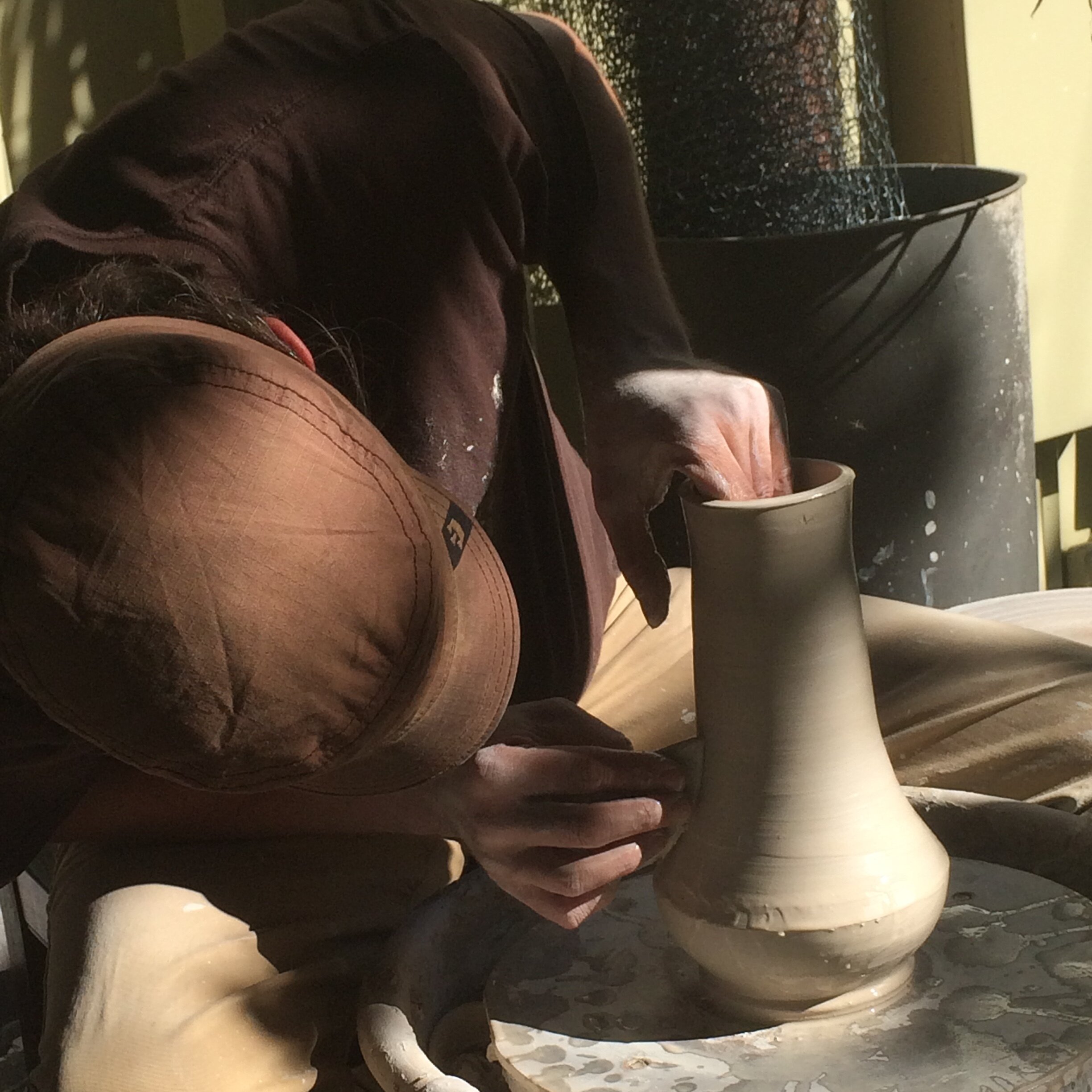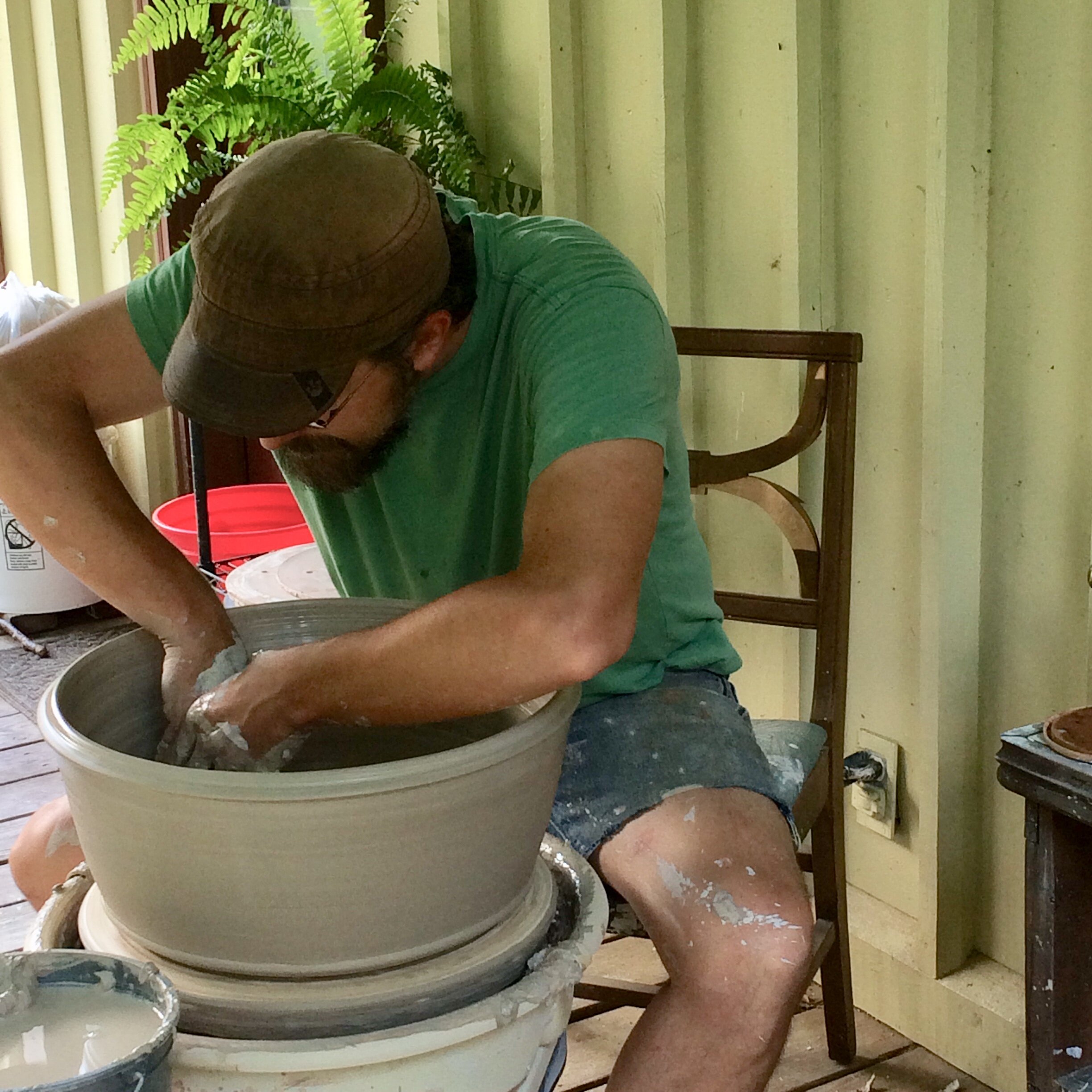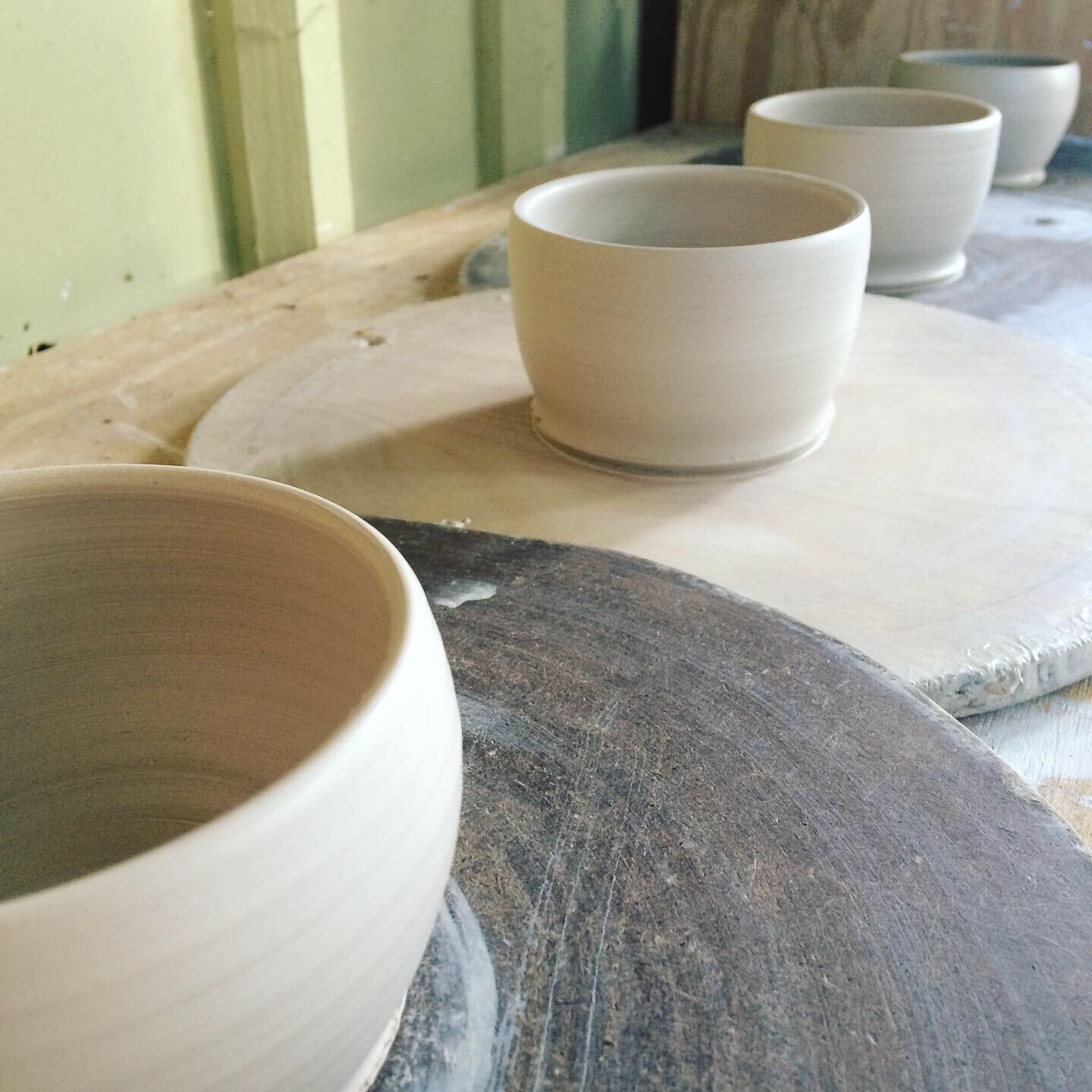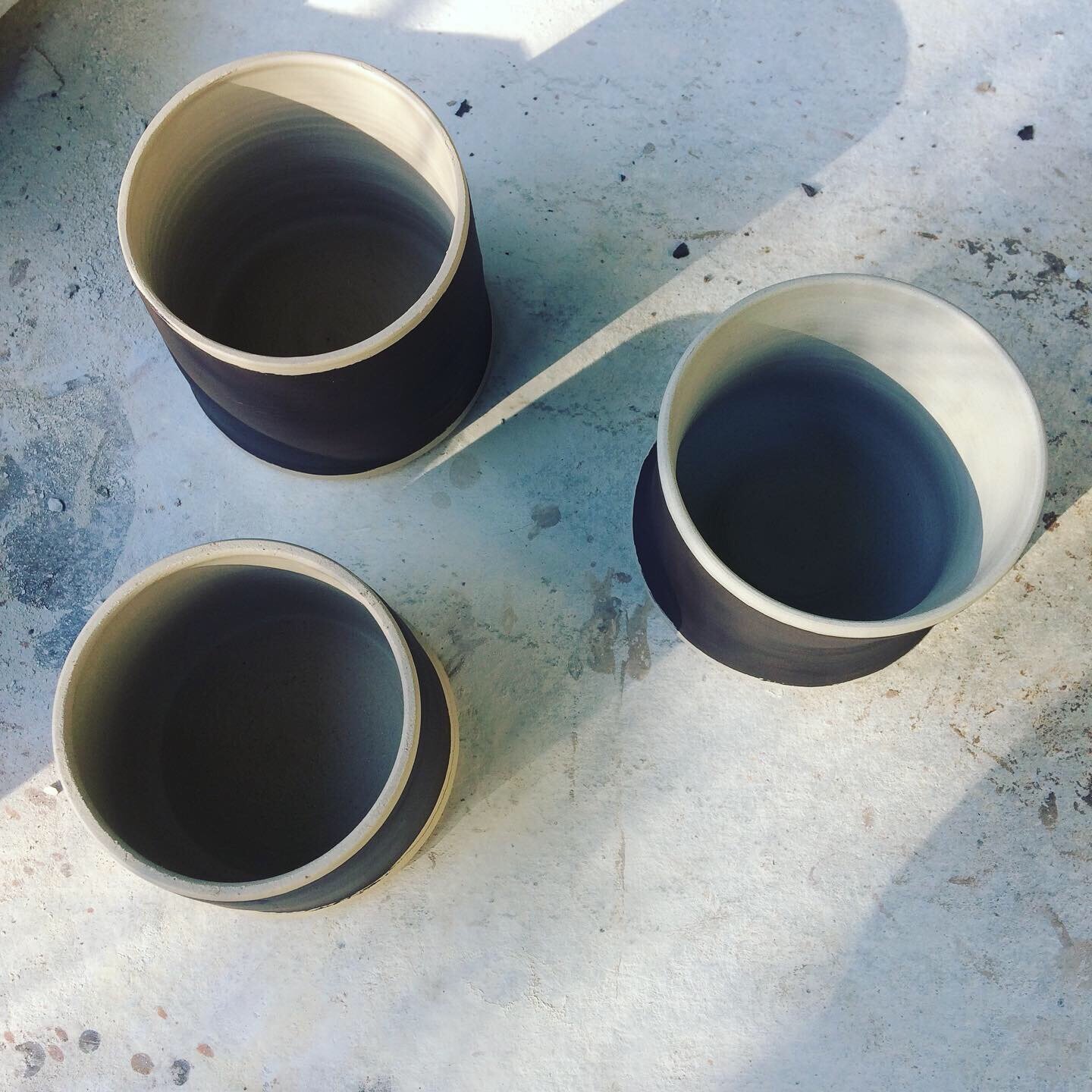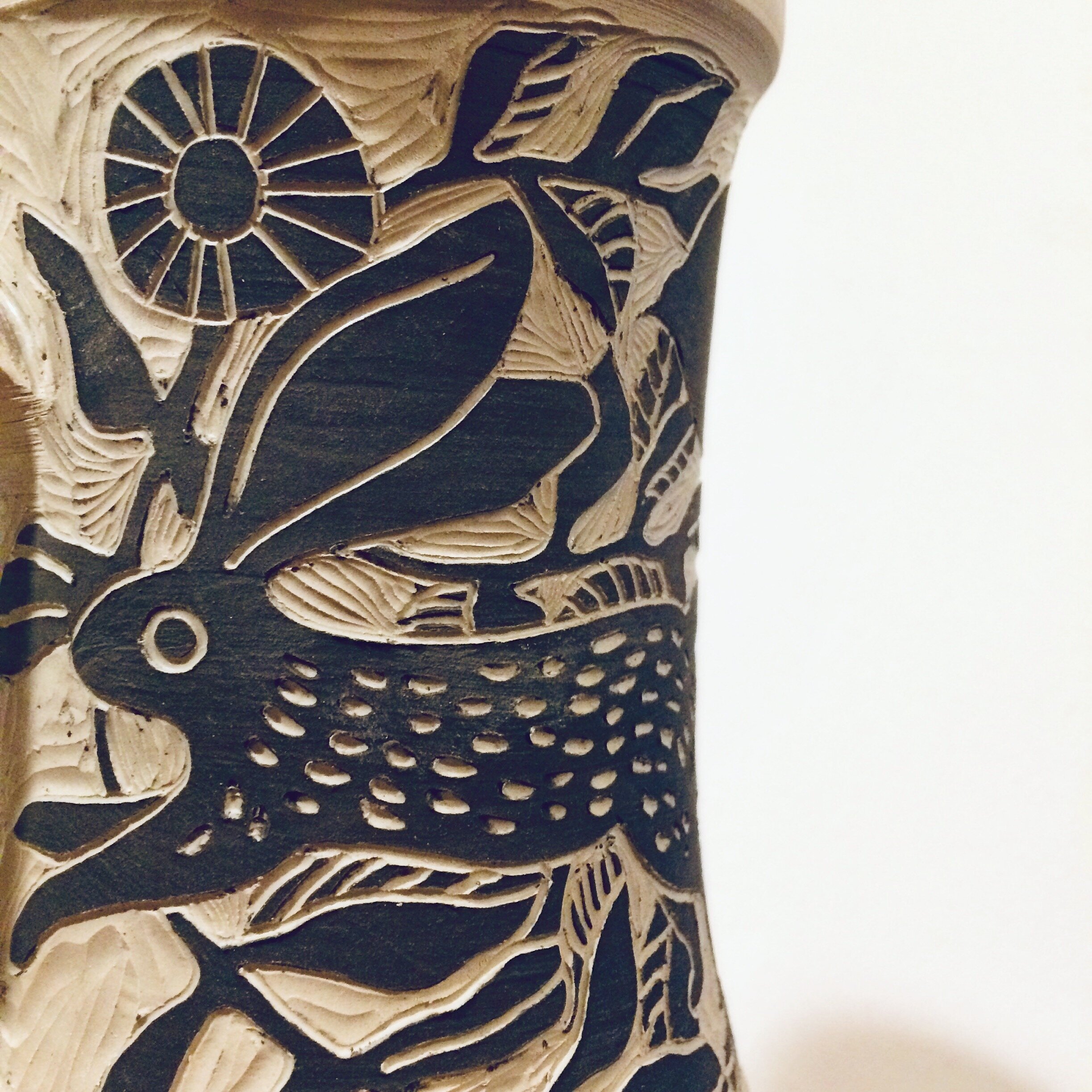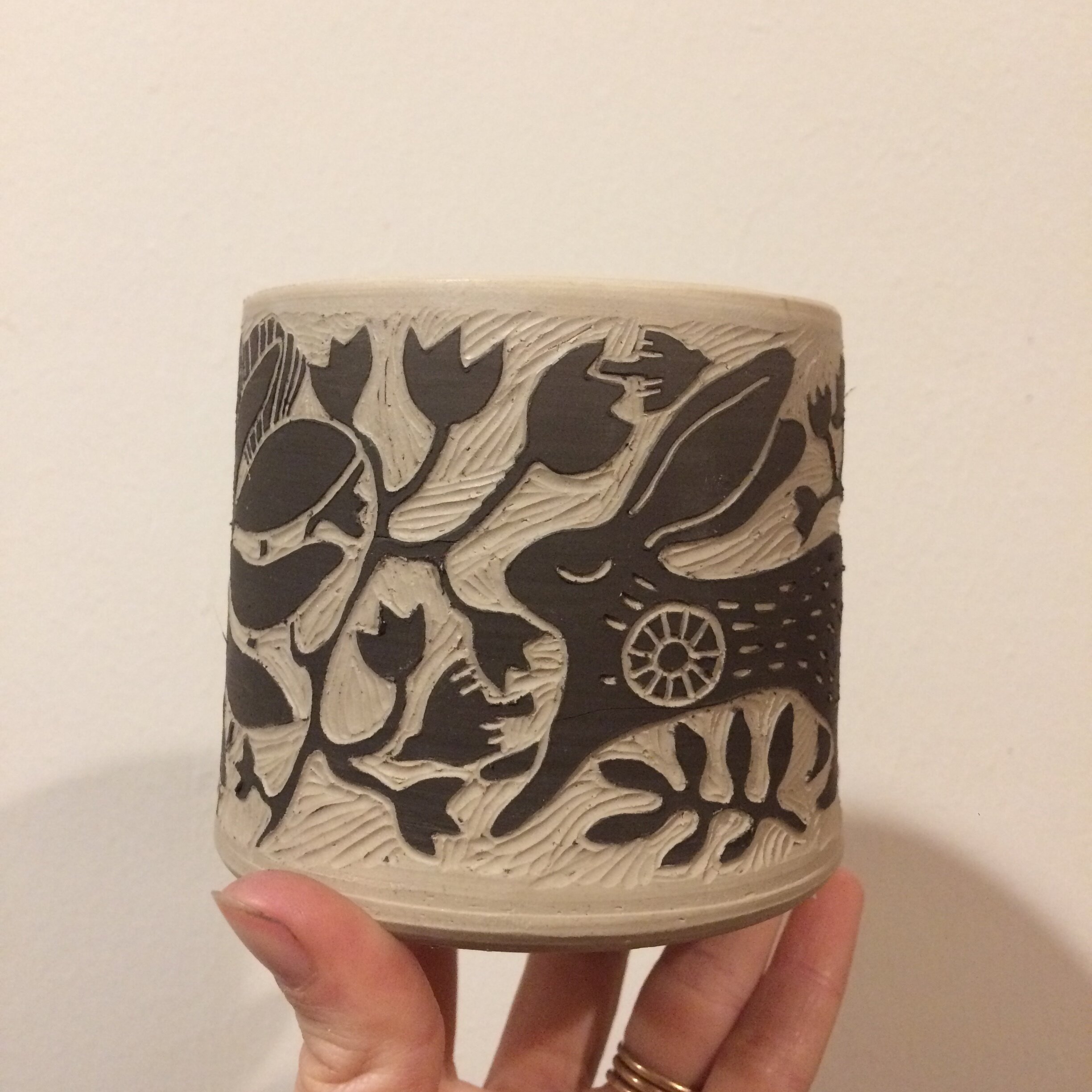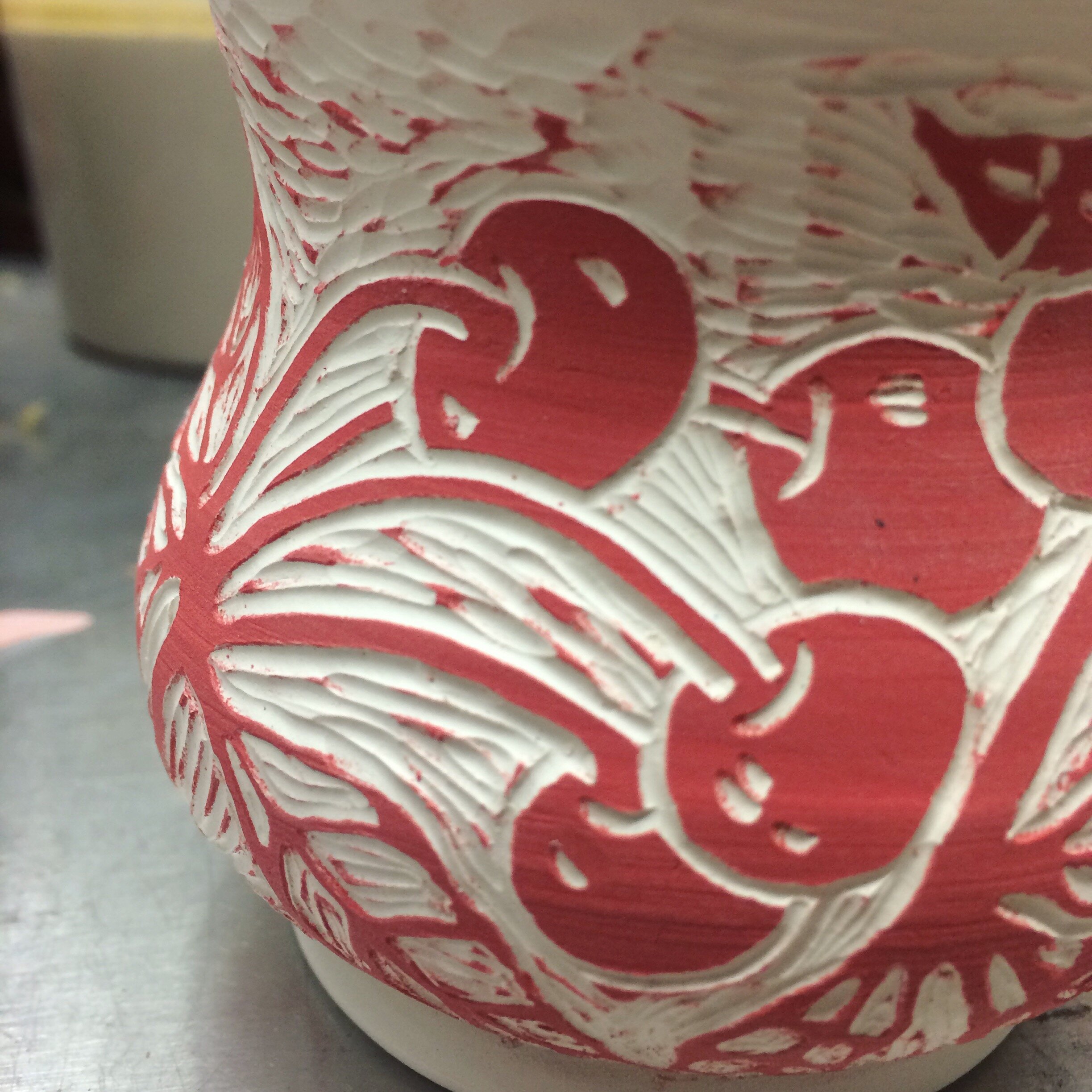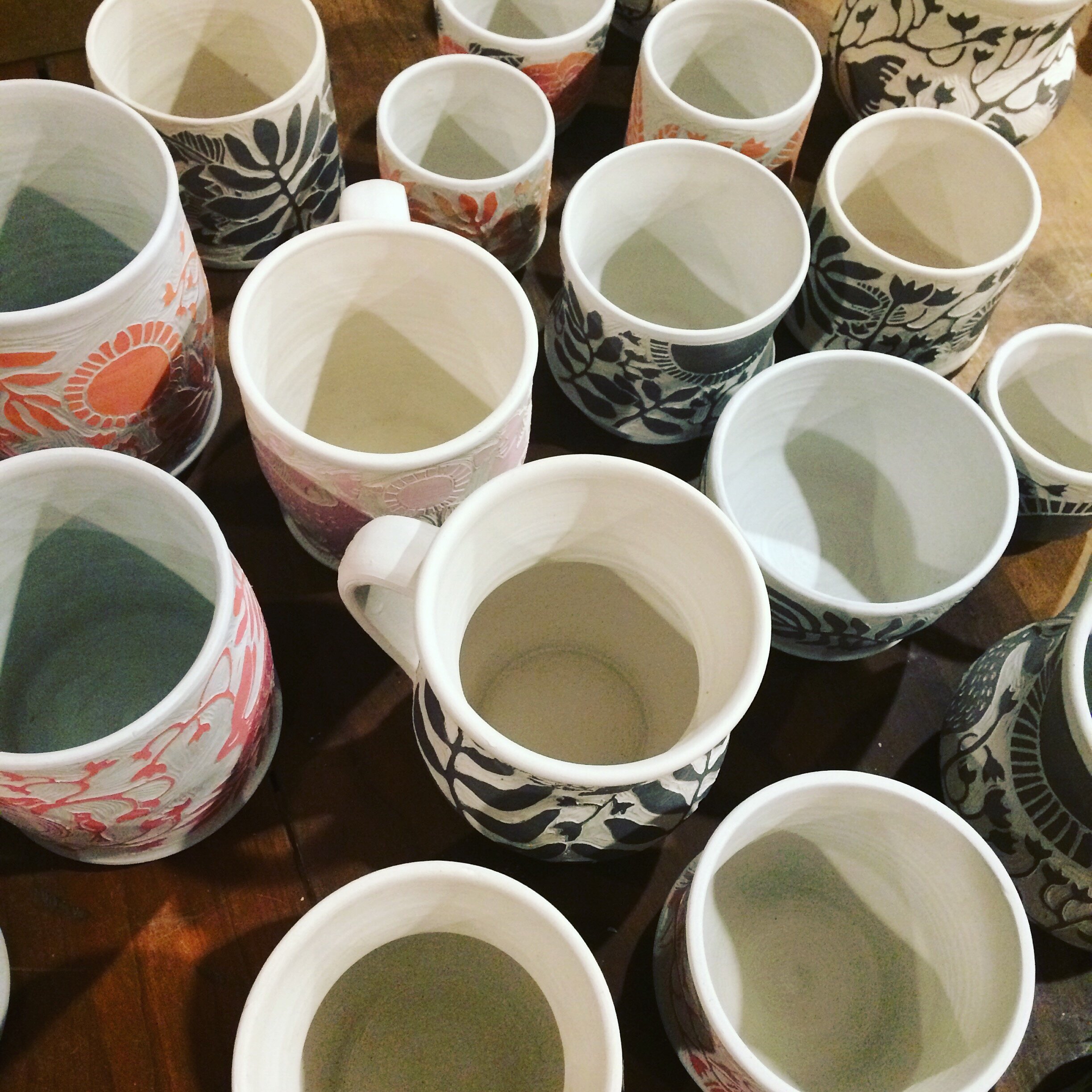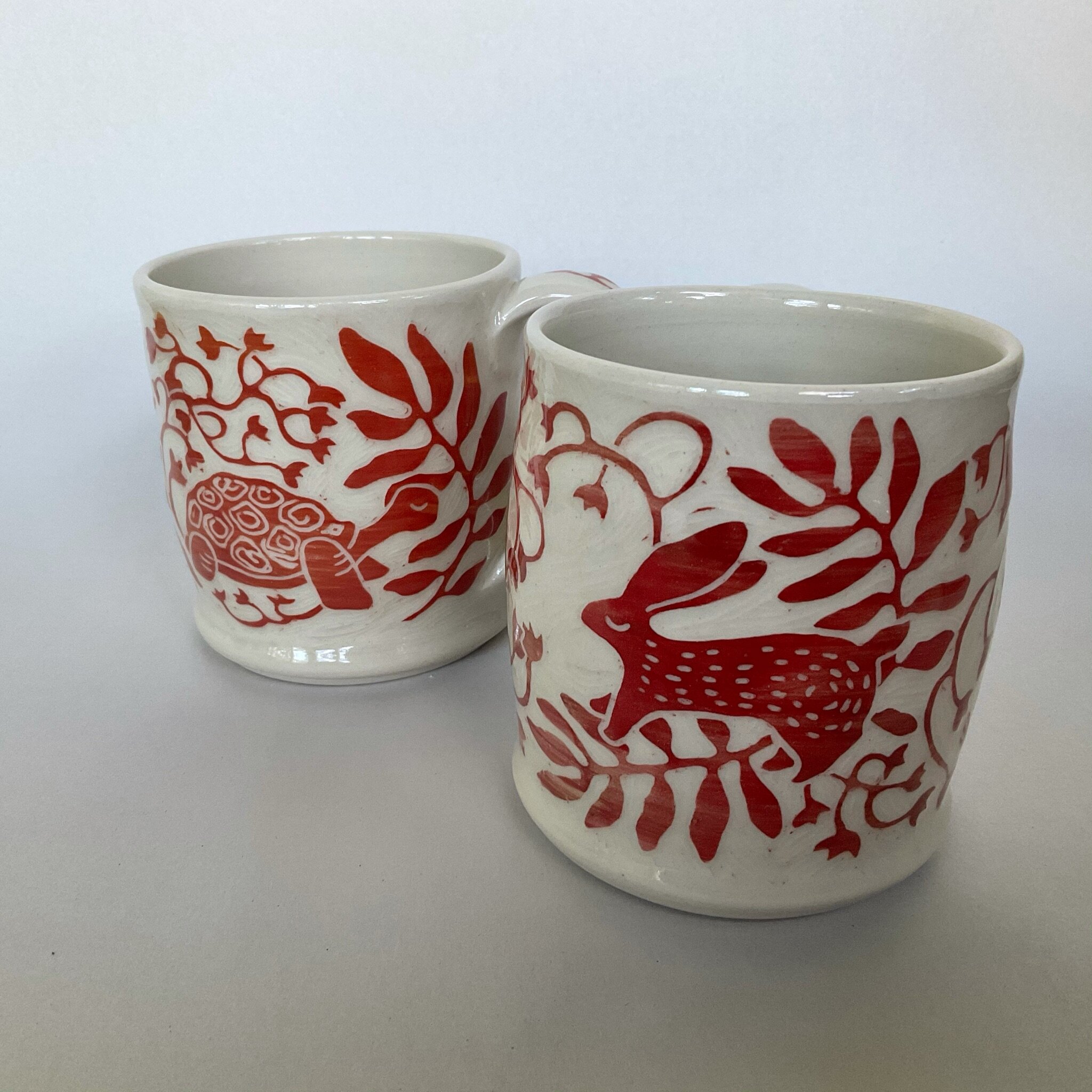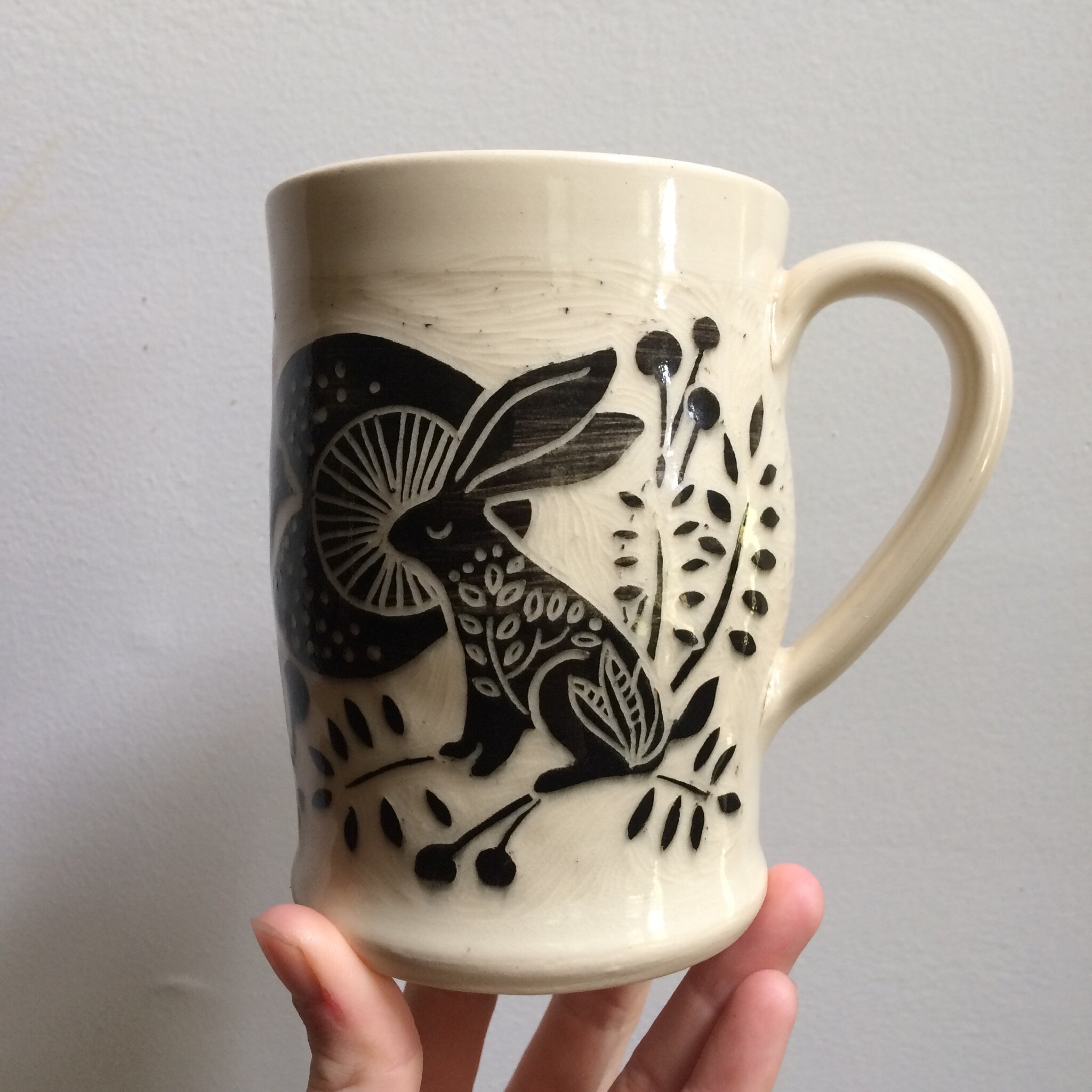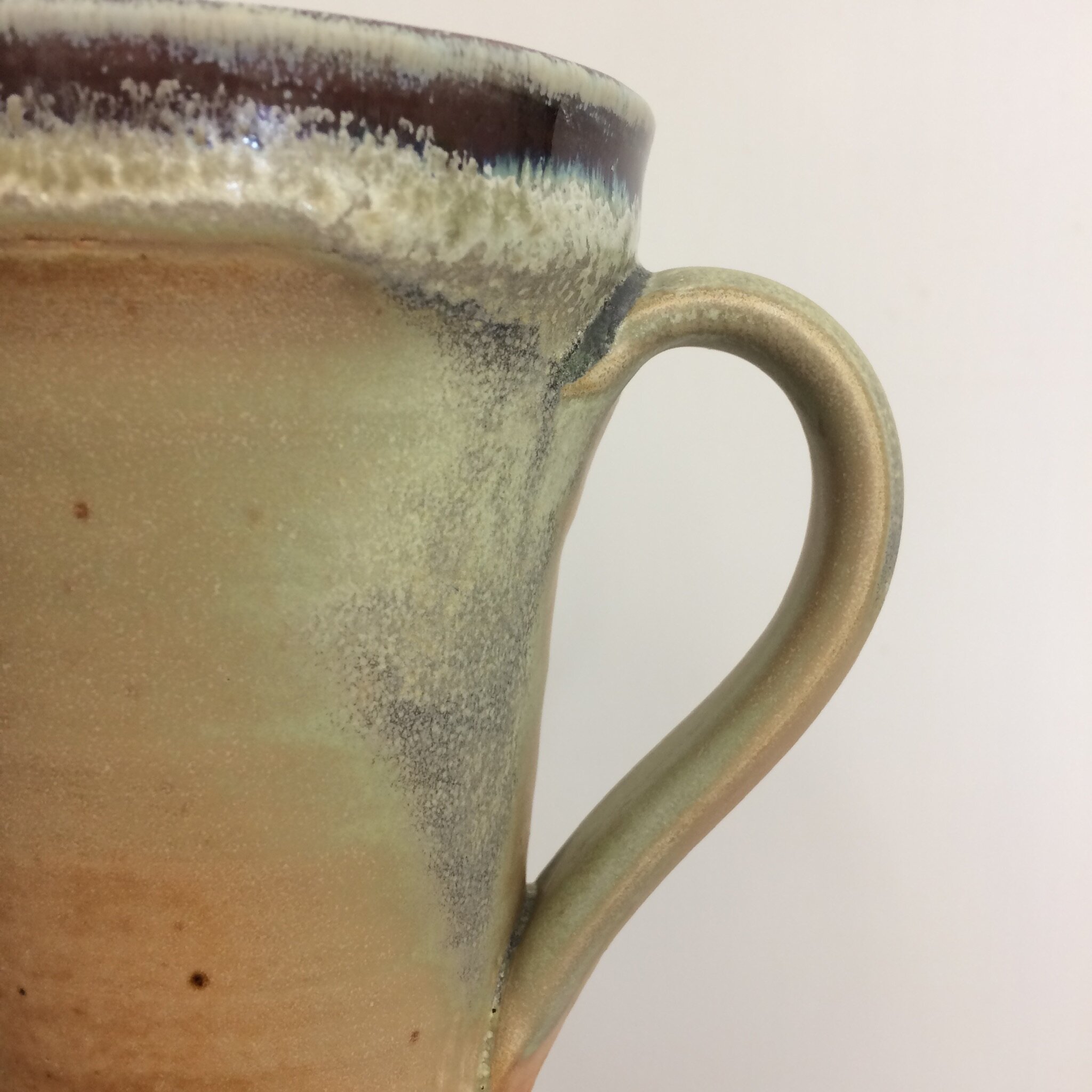Below is a very brief and simplified overview of our process, although the process varies widely depending on the clay, glazes, and intended outcomes.
Pieces are typically wheel-thrown by Brian or hand built at our outdoor home studio. After work is made, pieces air dry a bit until they are ready to be trimmed.
Then, if a piece is to be hand carved, we cover it in underglaze. Think of this as covering the leather hard clay in a type of colored pigment or paint.
Laura then hand draws the outline of a design onto the piece. After a design is drawn, the background (underglaze pigment) is removed with a little etching tool to reveal the clay body. This process is called sgraffito, and it gives the images their graphic outlines. Often you can the marks of the sgraffito process on the pieces themselves, a reminder of their handmade and unique nature. See video below for demo.
If work is not to be hand carved, it simply dries until it’s free of moisture. All work is then bisqued in in a kiln in preparation for a higher temperature firing.
After being bisqued in the kiln (a lower temperature), we then glaze each piece (clear for the hand carved work, various glazes for the high fired work). Glazed work is loaded back into a kiln for a higher temperature firing, temperatures vary depending on the clay and glazes we are using. The reactions that occur between clay bodies, glazes, undergalzes and temperature vary widely, making the ceramic arts a wonderful blend between chemistry, sculpture, art, and pure luck. The ceramic process takes weeks due to the various phases of production, and there is a lot of opportunity for things to wrong (or right) throughout the series of steps.
If all goes well, we wait a day or so for the kiln to cool, and are rewarded with whatever turned out well.
Ceramics is an ongoing learning process so experimentation and learning is an ever present component of our work.

